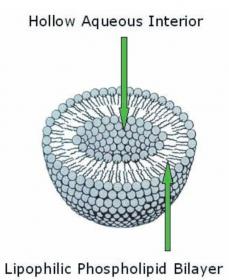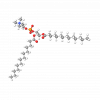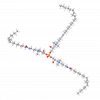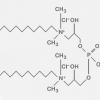Phospholipids are bipolar molecules with phosphate-containing hydrophilic "head" and long lipophilic "tails" which are esterified fatty acids. This group of organic compounds is very common in nature as they are pivotal components of all cell membranes. Structurally, Phospholipids are close to Ceramides which are also key components of cell membranes.
Thanks to their membrane-forming property, Phospholipids are used to build special vesicles called liposomes, which are like a pocket of an envelope for unstable active ingredients to protect them from environmental factors or other ingredients in the formula.
Under low shear mixing conditions, Phospholipids tend to be multilamellar, a structure comprised of oriented bilayers of phospholipid molecules surrounding concentric aqueous compartments. Further processing produces unilamellar liposomes that are small in size, uniform, and stable.
Liposomes concentrate and deliver active ingredients to the targeted site. Captured actives have been shown to be absorbed to greater levels than the ingredient by itself. This performance enhancement has been characterized by improved uptake and longer persistency.






